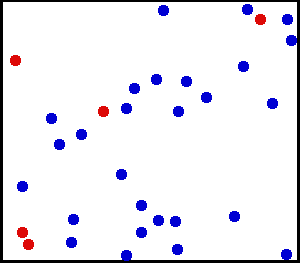The ideal gas law that completely, totally and utterly ignores both quantum mechanics and relativity.
It does not. I offered to let you folks use mass rather than energy and your side balked at that idea too. There's *nothing* being ignored except what must be ignored in a vacuum. The asymptote of "pressure" is zero, even *if* we even could get to zero atoms in the box. At the level of QM, you simply have the carrier particle of the EM field doing the "pushing". There's no "negative pressure" anywhere in the box.
How on Earth does this help in a situation which is a result of second quantization and ultra relativistic particles (and you can't get more ultra-relativistic than a photon).
A photon carries kinetic energy just like any ordinary particle of energy. It's wavelength determines it's energy state. What's the big deal with conceptually understanding a photon in terms of kinetic energy? Just how do you figure a solar panel works anyway?
Like I said before, its no less stupid than using Coulomb's law to describe the force of gravity.
I think you guys must be required to minor in strawman creation.
Guth needs the vacuum (not his hot near singularity thingy) to have a negative pressure. Gravity isn't going to do anything but hold the singularity thing in place, but unless your claiming the whole thing already has mass (like a Higg's condensate?), gravity isn't much of a factor as far as I know. Guth didn't suggest his heat thing already had mass at that point. His "heat" would by necessity need to overcome any form of curvature of gravity created by the formation of particles of mass. One can only wonder where the "heat" might come from or how it might physically manifest itself during supercooling other than to emit in the form of photons into an empty "vacuum". In no case does the heat thingy have anything to do with gravity as far as I know.
The carrier particle of the EM field is a force, and has nothing to do with pressure in the vacuum chamber and it's obviously related to the Casimir effect due to the influence of the materials. The EM carrier particles carry kinetic energy from one place to another, but then what is the carrier particle of the EM field? Come on. There's no mystery here. You have photons in motion inside the vacuum, or VP's if you like. They *push* things together via their kinetic energy.
You're such a pleasant chap, aren't you?
Well what choice do I have in this arena? It's like an angry mob of wolves around here and I have to cut through the BS as quick as possible, often times with formidable effort on my part, with posts from multiple people coming at me faster than I can respond.
The bottom line here is is you have everything bass-ackwards. The kinetic energy is already and forever inside the vacuum, both in terms of atomic kinetic energy, and subatomic kinetic energy. We can never get the energy state to even an absolute zero point, let alone any form of "negative pressure" out of a vacuum. There is no such thing as negative pressure in a vacuum, not even at the subatomic level. There are particles of mass flowing through all experiments on Earth, and photons of every wavelength carry momentum and kinetic energy.
No area inside a Casimir experiment experiences "negative pressure" either. That's another of those things you really don't understand at all. Those blue arrows and green lines should have tipped you off, but alas, evidently if one *only* understands math, and does not comprehend anything about the physics, I guess the notion of "negative pressure" in positive pressure environment might sound reasonable. If however you understand anything at all about what is physically happening inside the vacuum, it becomes obvious that there is no possibility of achieving 'negative pressure" in a vacuum, not at the atomic level, and not at the subatomic level. It's physically impossible.




